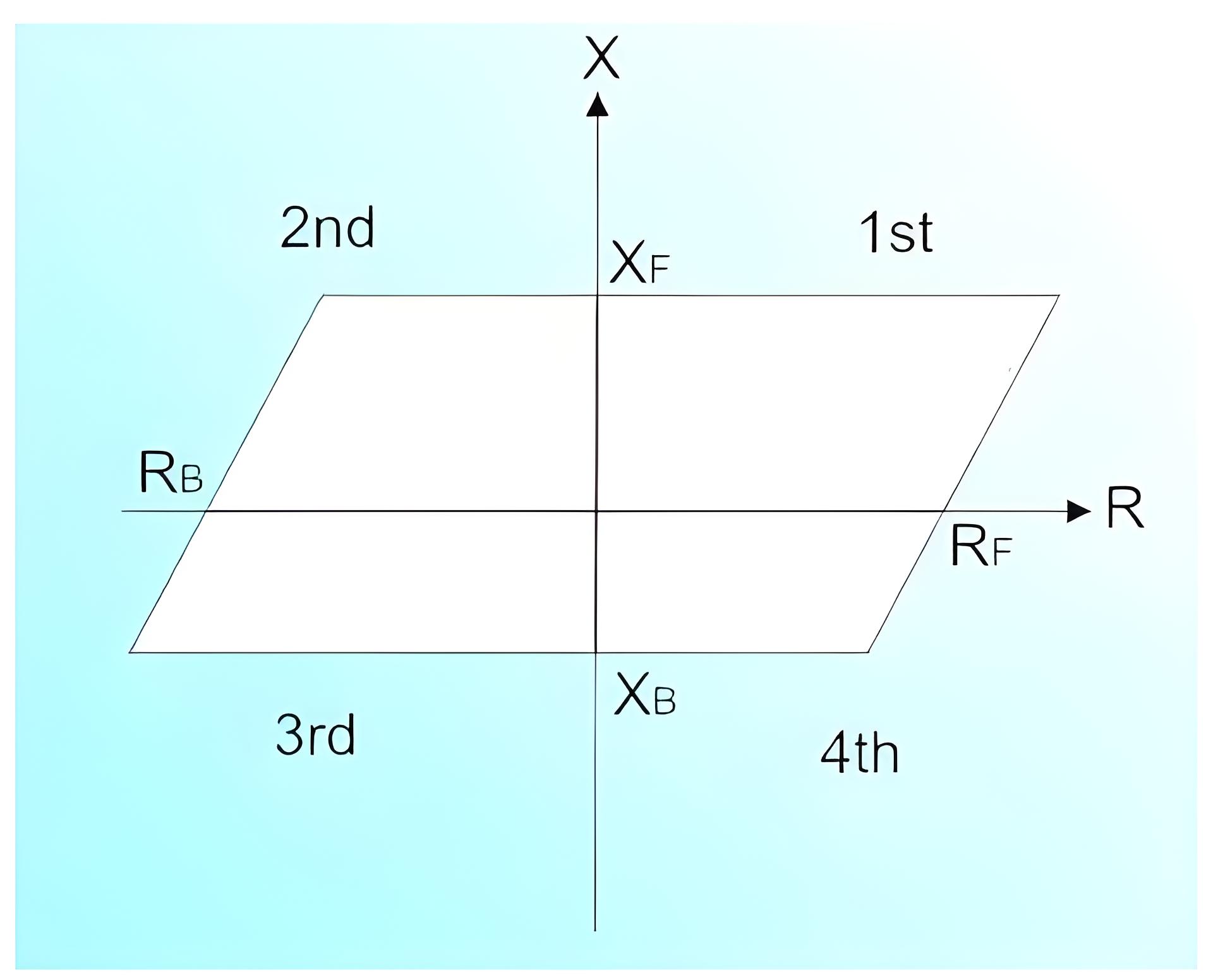Feeder Protection Relay
Feeder Protection Relay Definition
A feeder protection relay is defined as a device that protects power system feeders from faults like short circuits and overloads.
It measures the feeder line’s impedance (Z) using voltage (V) and current (I) inputs from the potential transformer (PT) and current transformer (CT). Impedance is calculated by dividing voltage by current: Z = V/I.
The relay compares the measured impedance to a preset value that represents the maximum allowable impedance for normal operation. If the measured impedance is lower, there is a fault, and the relay sends a trip signal to the circuit breaker to isolate it. The relay can also show fault parameters like fault current, voltage, resistance, reactance, and fault distance on its screen.
Fault distance is the distance from the relay to the fault, estimated by multiplying the measured impedance by the line impedance per kilometer. For example, if the measured impedance is 10 ohms and the line impedance per kilometer is 0.4 ohms/km, the fault distance is 10 x 0.4 = 4 km. Knowing this helps locate and repair the fault quickly.
Distance Protection Relay
Measures impedance to detect faults and sends a trip signal to isolate the faulty section.
Quadrilateral Characteristic
Distance protection relays can have various operating characteristics, including circular, mho, quadrilateral, or polygonal. The quadrilateral characteristic is popular in modern numerical relays for its flexibility and accuracy in setting protection zones.
A quadrilateral characteristic is a parallelogram-shaped graph that defines the protection zone of the relay. The graph has four axes: forward resistance (R F), backward resistance (R B), forward reactance (X F), and backward reactance (X B). The graph also has a slope angle called the relay characteristic angle (RCA), which determines the shape of the parallelogram.

The quadrilateral characteristic can be plotted by using the following steps:
Set the R F value on the positive X-axis and the R B value on the negative X-axis.
Set the X F value on the positive Y-axis and the X B value on the negative Y-axis.
Draw a line from R F to X F with a slope of RCA.
Draw a line from R B to X B with a slope of RCA.
Complete the parallelogram by connecting R F to R B and X F to X B.
The protection zone is inside the parallelogram, which means that if the measured impedance falls inside this area, then the relay will trip. The quadrilateral characteristic can cover four quadrants of operation:
First quadrant (R and X values are positive): This quadrant represents an inductive load and a forward fault from the relay.
Second quadrant (R is negative and X is positive): This quadrant represents a capacitive load and a reverse fault from the relay.
Third quadrant (R and X values are negative): This quadrant represents an inductive load and a reverse fault from the relay.
Fourth quadrant (R is positive and X is negative): This quadrant represents a capacitive load and a forward fault from the relay.
Zones of Operation
Distance protection relays have different zones of operation, defined by impedance settings and time delays. These zones coordinate with other relays to provide backup protection for adjacent feeders.
The typical zones of operation for a distance protection relay are:
Zone 1: This zone covers 80% to 90% of the feeder length and has no time delay. It provides primary protection for faults within this zone and trips instantaneously.
Zone 2: This zone covers 100% to 120% of the feeder length and has a short time delay (usually 0.3 to 0.5 seconds). It provides backup protection for faults beyond zone 1 or in adjacent feeders.
Zone 3: This zone covers 120% to 150% of the feeder length and has a longer time delay (usually 1 to 2 seconds). It provides backup protection for faults beyond zone 2 or in remote feeders.
Some relays may also have additional zones, such as Zone 4 for load encroachment or Zone 5 for overreaching faults.
Selection Criteria
Choose numerical relays over electromechanical or static relays for better performance, functionality, flexibility, and diagnostics
Choose distance protection relays over overcurrent or differential protection relays for long or complex feeders
Choose quadrilateral characteristics over circular or mho characteristics for more accuracy and adaptability
Choose low-energy analog sensor inputs over conventional current/voltage inputs for reduced size, weight, and safety hazards.
Choose arc-flash detection relays over conventional relays for faster tripping and personnel safety.
Conclusion
Feeder protection relays are vital devices that protect power system feeders from various types of faults. They can improve power system reliability, security, and efficiency by quickly detecting and isolating faults, preventing damage to equipment, and minimizing power outages.
One of the most common types of feeder protection relays is the distance protection relay, which measures the impedance of the feeder line by using the voltage and current inputs from the corresponding potential transformer and current transformer. It compares the measured impedance with a predefined setting value, which represents the maximum allowable impedance for normal operation. If the measured impedance is lower than the setting value, it means that there is a fault on the feeder line, and the relay will send a trip signal to the circuit breaker to isolate the fault.
The distance protection relay can have different operating characteristics, such as circular, mho, quadrilateral, or polygonal. A quadrilateral characteristic is a popular choice for modern numerical relays because it offers more flexibility and accuracy in setting the protection zones.
A quadrilateral characteristic is a parallelogram-shaped graph that defines the protection zone of the relay. The graph has four axes: forward resistance (R F), backward resistance (R B), forward reactance (X F), and backward reactance (X B). The graph also has a slope angle called the relay characteristic angle (RCA), which determines the shape of the parallelogram.
The Electricity Encyclopedia is dedicated to accelerating the dissemination and application of electricity knowledge and adding impetus to the development and innovation of the electricity industry.













